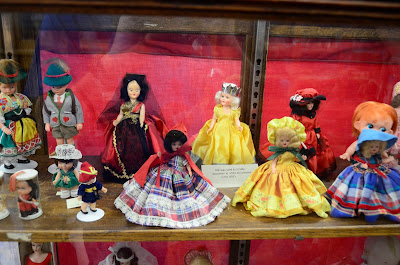This is our third trip to the Tetons and we plan to stay a bit longer to explore the majesty of these towering peaks, the youngest on the continent and still growing. The name was given by a French trappers who looked up at the tall, pointed triangular shapes and thought of women’s breasts, hence Tetons.
That this area is a national park is due mainly to John D. Rockefeller, Jr. of Standard Oil. Some of the area was designated at national preserve by Calvin Collidge in 1909. Decades later Rockefeller set up the Snake River Land Company and bought up thousands of acres to donate to the park service, but nothing happened. He ultimately threatened to sell the land if it was not declared a national park. In 1943 FDR created the Jackson Hole National Monument. From that came Grand Teton NP
The Tetons are best know for two features, those pointed mountains and the wildlife. This area is home to grizzlies, brown and black bear, moose, elk, deer and smaller mammals and hundreds of birds. Insects also thrive here. On our first night we attended an outstanding ranger talk on Grizzly 399, the most famous grizzly in the park. She is famous because she has been sighted so often. The ranger explained that much of her and her cubs survival success is owed to the fact that she understands being closer to humans keeps her family safe from male grizzlies who kill the young in order to create their own with the mother. The ranger explained her “family tree” and that the survival rate of her young exceeds the average of 40%.
399 is the one visitors holding phone cameras and those with tens of thousands of dollars of equipment seek as they traverse the park. We set out on our first day driving the southern roads and saw magnificent scenery but no animals.
Our walk also yielded no animals. Later in the evening we joined a “bear jam” a crush of cars whose passengers are all searching for bears. Many of these jams are false alarms or drivers arrive too late. We did see the ranger shoo off a black bear from the side of the road.
Then we took a side-road and found a crowd, mostly with those expensive cameras. More importantly we saw grizzly 793 (tag number) and her two cubs. The rangers demand people stay 100 yards from the bear (for their safety and ours) so our pictures are from a distance (and our cameras are more affordable) but we did see this wonderfully large beast and her playful cubs.
What we also saw was carpets of flowers, yellow, purple, rose and white. These arrowleaf balsamroot are everywhere and make the land seem golden. Deer and pronghorn antelope are especially fond of them.
On our last day in the Tetons, Jerry decided that he wanted to take a 4 mile ranger led hike to Swan Lake. Although there was a great deal of bird life in the area, we saw no swans and the lake is largely covered with lily pads. The flowers have not yet bloomed and, when they do, the pads will fall to the bottom of the lake leaving room for the waterfowl. The ranger showed a picture of the Tetons done in the 1800s by an artist from the Hudson River School that, up a few months ago, hung in the Oval Office. No one knows if it is still there.
To everyone’s surprise, one group of birds we saw were pelicans. Everyone thought that these were salt water birds but the ranger explained that many of them come to the Tetons because they have acquired a taste for trout and they journey here in the spring to spend the warm months in the park.
There were also many ducks, a robin and Canada geese.
































































